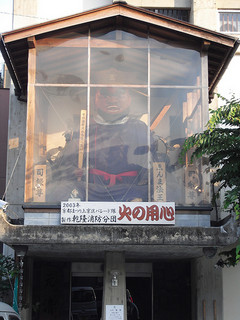Difference between revisions of "Senbon Enma-do"
| Line 16: | Line 16: | ||
==References== | ==References== | ||
*Plaques on-site. | *Plaques on-site. | ||
| + | |||
| + | ==External Links== | ||
| + | *[https://maps.google.com/maps?q=%E5%8D%83%E6%9C%AC%E9%96%BB%E9%AD%94%E5%A0%82&hl=en&ie=UTF8&ll=35.034956,135.740472&spn=0.00235,0.005284&sll=34.414186,-119.859201&sspn=0.018941,0.042272&t=h&hq=%E5%8D%83%E6%9C%AC%E9%96%BB%E9%AD%94%E5%A0%82&radius=15000&z=18 Senbon Enma-dô on Google Maps]. | ||
[[Category:Heian Period]] | [[Category:Heian Period]] | ||
[[Category:Temples]] | [[Category:Temples]] | ||
Latest revision as of 13:48, 4 November 2012
- Established: 1017
- Other Names: 光明山歓喜院引接寺 (koumyouzan kankiin injouji)
- Japanese: 千本閻魔堂 (senbon enma-dou)
Senbon Enma-dô is a Buddhist temple and prominent pilgrimage site in northern-central Kyoto dedicated to Enma (aka Yama), the King of Hell. The site is named Senbon after the thousand cherry trees, or thousand memorial tablets, that once stood here; Senbon-dôri, a major avenue running north-south past the temple, also takes its name from this.
The temple was officially founded in 1017 on a site prepared by Ono no Takamura (802-853).
Every May, the Enma-dô is home to the Senbon Enma-dô Dainenbutsu Kyôgen, the only spoken-word drama of the three great Buddhist invocation dramas of Kyoto, and an Intangible Cultural Folk Heritage, as designated by the city.
A small stone tower dedicated to Murasaki Shikibu and erected in 1386 has been designated a national cultural asset. En'a Shônin, who erected it, did so in order to elevate or restore Murasaki's reputation, which he felt had recently fallen.
References
- Plaques on-site.
